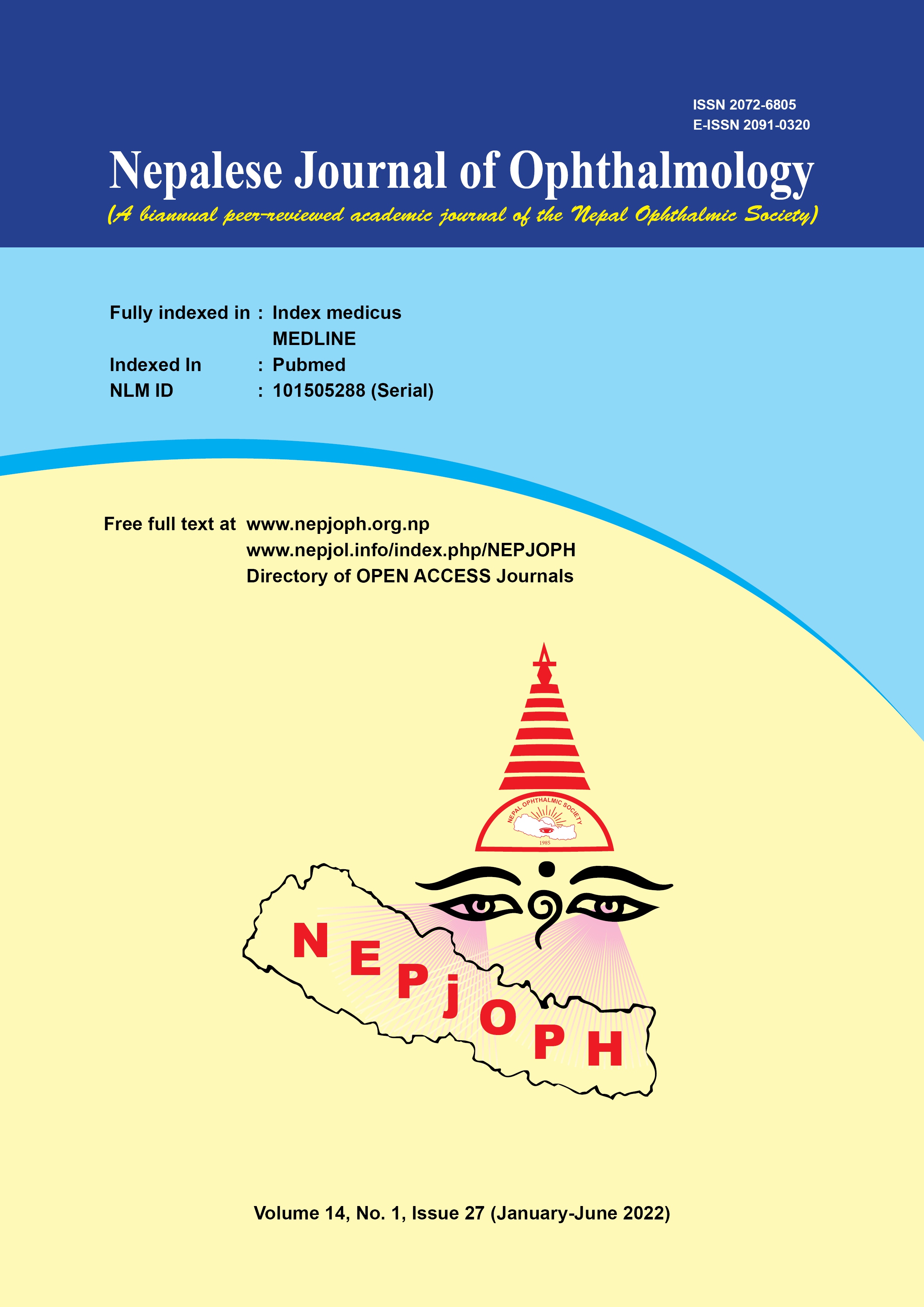Outcomes of Fungal Corneal Ulcer with Impending Perforation after Temporary Suture Tarsorrhaphy
DOI:
https://doi.org/10.3126/nepjoph.v14i1.37965Keywords:
Corneal ulcer, Fungal keratitis, Impending perforation, Temporary suture tarsorrhaphyAbstract
Introduction: This study aims to evaluate outcomes and complications of temporary suture tarsorrhaphy (TST) in cases of impending corneal ulcer perforation.
Materials and methods: Case records of patients who underwent temporary suture tarsorrhaphy at Mechi Eye Hospital during a period of 18 months were retrospectively evaluated. All the smear positive fungal keratitis with more than 5mm infiltration involving central and/or paracentral cornea with impending corneal perforation were included. Demographic and clinical profile including – visual acuity, indication for temporary suture tarsorrhaphy, duration of signs and symptoms were noted. The outcomes were evaluated after 1 month and 3 months post tarsorrhaphy, in relation with time to epithelial healing, anatomical success rate, best corrected visual acuity, complications associated with non-healing corneal ulcer, number of temporary suture tarsorrhaphy needed and complications of TST.
Results: The study included 119 cases of smear positive fungal keratitis with mean age of 51.34 + 15.56 years. In this study, 56.30% of the patients developed epithelial healing at 2 – 4 weeks with mean duration of 23.24 + 12.09 days of temporary suture tarsorrhaphy. Out of 119 patients, the corneal ulcer healed in 84 patients (70.6%), whereas 35 (29.4%) did not heal. Among those with non-healing ulcers, 15 patients (12.6%) had to undergo evisceration. The anatomical success rate was 87.39% which was statistically significant (P = 0.001). Regarding visual outcome, in 62 patients (52.10%) BCVA improved by 2 or more lines, which was statistically significant (P<0.05) resulting in a functional success of 26.89%.
Conclusion: This study concludes that temporary suture tarsorrhaphy could be a useful option for management of corneal ulcers with impending perforation in eye centers with limited resources settings and high disease burden with good anatomical and functional outcome.
Downloads
Downloads
Published
How to Cite
Issue
Section
License
Copyright (c) 2022 Nepalese Journal of Ophthalmology

This work is licensed under a Creative Commons Attribution-NonCommercial-NoDerivatives 4.0 International License.
This license enables reusers to copy and distribute the material in any medium or format in unadapted form only, for noncommercial purposes only, and only so long as attribution is given to the creator.




